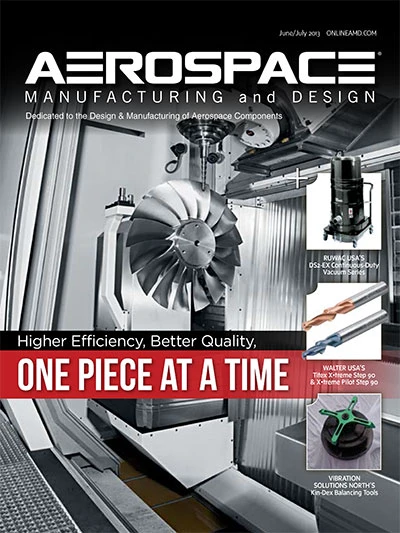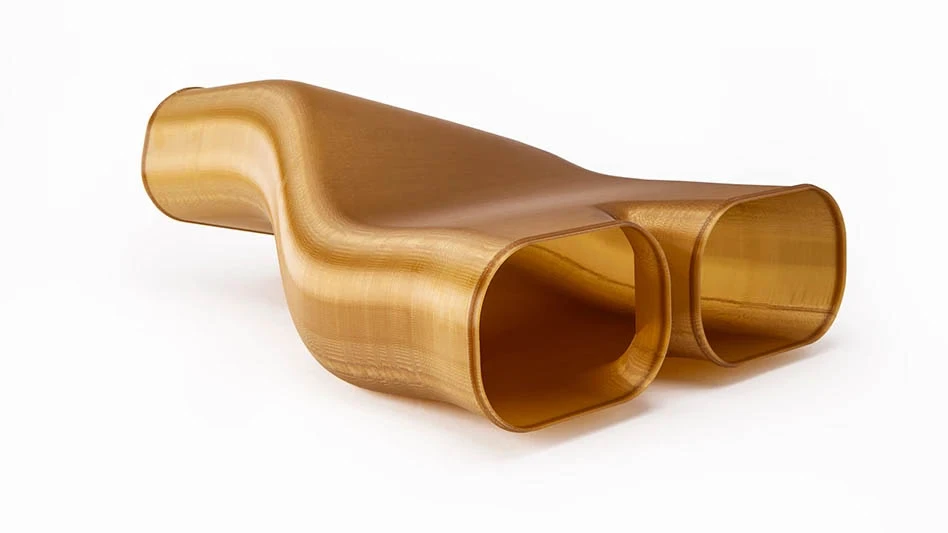 This artist's concept shows the sky crane maneuver during the descent of NASA's Curiosity rover to the Martian surface.Image Credit: NASA/JPL-Caltech |
Mars Science Laboratory is a robotic space probe mission that successfully landed Curiosity, a Mars rover, in Gale Crater on Mars on August 5, 2012. The sky crane landing sequence required the rover to transform from its stowed flight configuration to landing configuration while being lowered to Mars wheels-down from the descent stage. The final entry, descent, and sky crane-landing phase was called “seven minutes of terror” by NASA engineers because of its complexity and the fact that human intervention from Earth was impossible.
NASA Jet Propulsion Laboratory (JPL) engineers simulated this final sky crane landing sequence using MSC Software’s Adams multibody dynamics software. The simulation identified problems with the initial concept design, and guided engineers as they resolved these issues and made the design more robust. The simulation was also used to validate the landing sequence and determine loads on subassemblies and components. The controls software code that guides the mission through the sky crane landing sequence was integrated into the Adams environment to validate and tune its performance. The accuracy of these simulations was proven by the success of the mission.
 As it explores with greater range than any previous Mars rover, Curiosity will analyze dozens of samples drilled from rocks or scooped from the ground. |
Complex Landing Sequence
The Curiosity rover is about twice as long and five times as heavy as previous Mars Spirit and Opportunity rovers. Landing such a large payload on Mars is challenging because the atmosphere on Mars is too thin for parachutes and aerobraking to be effective yet still thick enough to create the potential for stability and impingement problems when decelerating with rockets. Also at 900kg, the Curiosity rover is too heavy to use airbags to cushion the shock of landing. One additional challenge is that the 14-minute trip required for a radio signal to travel from Mars to Earth means that the vehicle must act autonomously without interactive control from Earth for the entire landing sequence.
NASA engineers addressed these challenges by developing a unique entry-descent-landing system. The aeroshell – containing the heat shield, rover, descent stage, backshell, and parachute – separated from the cruise stage 10 minutes before entering the Martian atmosphere and fired thrusters to orient the heat shield facing Mars. The aeroshell slowed to about 578m/second at about 10km from Mars, at which point a supersonic parachute deployed.
At about 1.8km altitude with the aeroshell traveling at 100m/second, the rover and descent stage dropped out. The descent stage fired its rocket thruster to slow to less than 1m/second and lowered the rover with a 7.6m tether consisting of three bridles and an umbilical cable carrying electrical signals to the Martian surface. As the bridles unreeled, the rover’s six motorized wheels snapped into position to prepare for landing. After landing, the rover fired explosive devices activating cable cutters to free itself from the descent stage and the descent stage crash-landed hundreds of meters from the rover. At 6:33 a.m., the rover confirmed a successful landing.
 In the final seconds, the upper stage acted as a sky crane, lowering the upright rover on a tether to the surface. |
Just One Chance
There was only one chance to get it right. The complex sequence either works perfectly or the entire mission goes up in a cloud of Martian dust as the rover is destroyed. Engineers cannot test the landing sequence on Earth because they cannot duplicate Martian gravity, atmosphere, and the landing conditions on Earth. They can test individual components, but the only way to test the complete sequence and determine the loads on the individual components is with simulation. The program engineers recognized the importance of simulation from the very beginning and devoted an average of three people working with multibody dynamics over the life of the project.
The rover, the most critical part of the simulation, was modeled to a high level of fidelity including many flexible elements, some of which incorporated nonlinear stiffness and damping. The descent stage model is much simpler, consisting entirely of rigid bodies. In the beginning of the project, separate models were used for the rover separation, mobility deployment, and touchdown phases. During the later stages of the project, all of the models were merged into one. The combined model runs from 17 to 93 minutes on a four-CPU Hewlett Packard Unix workstation.
 Curiosity is about twice as long (about 3m or 10ft) and five times as heavy as NASA’s twin Mars Exploration Rovers, Spirit, and Opportunity, launched in 2003. |
Determining Loads
Optimizing the design of every component in the payload was critical. This is due to the fact that designers needed to ensure the ability for it to withstand loads and successfully perform the mission while, at the same time, minimizing the weight because of the high cost of transporting incremental weight to Mars.
Adams was used to predict the loads on components and subassemblies, and these loads in turn were used as input to structural analysis that optimized the design to provide the strength to withstand mission loads while minimizing size and weight. The philosophy of the modeling was not to try to predict every event to 100% accuracy, but rather to determine the bounding-limit design loads that could be expected on every component.
Prior to the Adams simulation, JPL engineers believed that the projected 1m/second maximum speed during touchdown would not induce particularly high loads on the rover. However, simulation showed the loads were much higher than expected. The original expectations also were that the rover would be in a quiescent state when it touched down on the Martian surface, but the Adams simulation showed that the rover was actually rotating and swinging as it landed. As a result, the rover structure was stiffened to mitigate these issues.
Later studies provided the additional surprise that the deployment of the rover’s wheels and struts as originally planned generated even greater loads on some of the rover components than the touchdown. Simulation showed that the end of wheel deployment generated hammer-like blows on the rover suspension and frame.
JPL engineers addressed this problem by changing the timing of the wheels and struts deployment. Changing the timing of the wheels and struts deployment also reduced the swing rate and swing angle before touchdown.
Checking Other Aspects
The most critical aspect of the separation between the rover and descent stage is the need to avoid contact between the flight hardware. The Adams simulation was used to check the clearance and ensure that there was no possibility of contact. In the final design, there is very small clearance but no contact issue.
 During the three minutes before touchdown, the spacecraft slowed its descent with a parachute, then used retrorockets mounted around the rim of an upper stage. |
The flight control software was written in C++. The people who wrote the controller software required a detailed mechanical model to predict the system performance accurately. The engineers overcame this issue by compiling the controller with the Adams solver. This made it possible to validate the system performance and tune the controller parameters with a detailed mechanical model. JPL engineers validated and updated the Adams model by correlating the simulation results to the test data. The engineers at JPL were not able to test most of the critical mission events on Earth, so they had to rely upon simulation to design most of the critical hardware and control sequences for this mission. The accuracy and thoroughness of the simulation results helped make it possible to place the rover onto the Red Planet successfully and precisely.
MSC Software Corp.
Santa Ana, Calif.
www.mscsoftware.com
This story is courtesy of MSC Software, and is based on an interview with Dr. Chia-Yen Peng, principal and lead engineer for the Loads and Dynamic Simulation team at NASA’s Jet Propulsion Laboratory (JPL).

Explore the July 2013 Issue
Check out more from this issue and find your next story to read.
Latest from Aerospace Manufacturing and Design
- Bell awarded funding for X-plane build phase of SPRINT program
- Shaft coupling clamps
- #46 Lunch + Learn Podcast with SMW Autoblok
- Gleason Corp. acquires the Intra Group of Companies
- Thread milling cutter reduces cutting pressure, vibration
- Malaysia Aviation Group orders 20 more Airbus A330neo widebodies
- More displacement from space-tested piezo actuators
- Textron Aviation to bring its largest-ever lineup to 2025 EAA AirVenture





